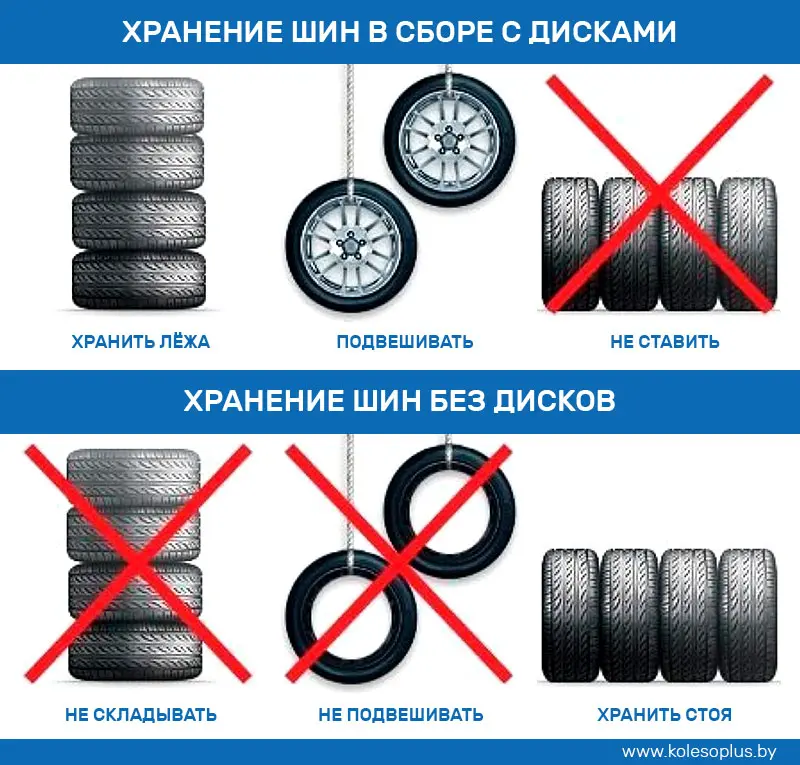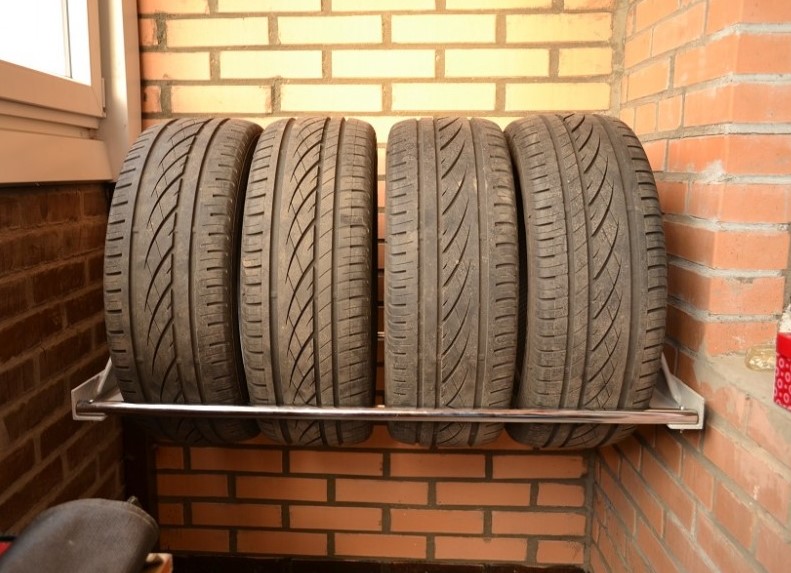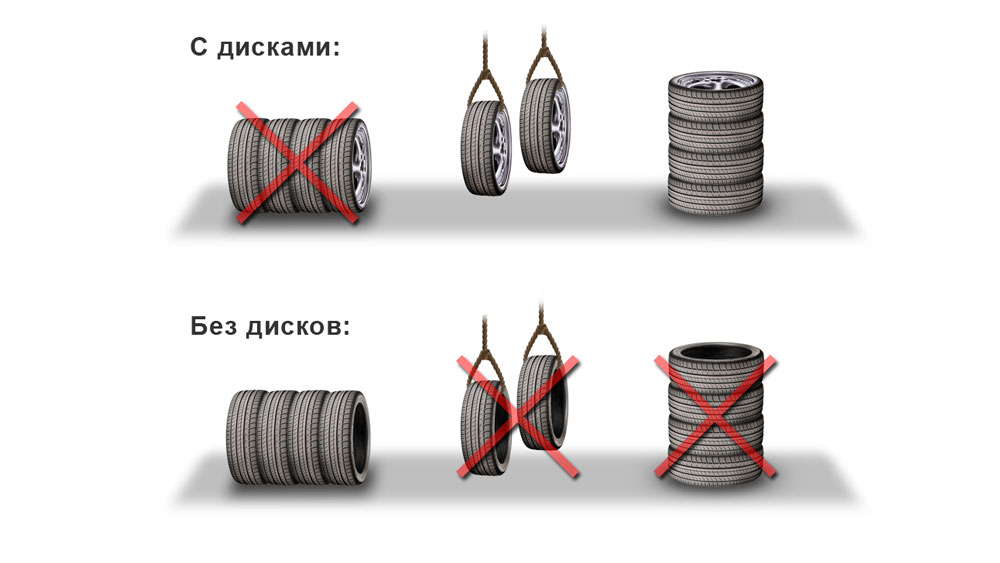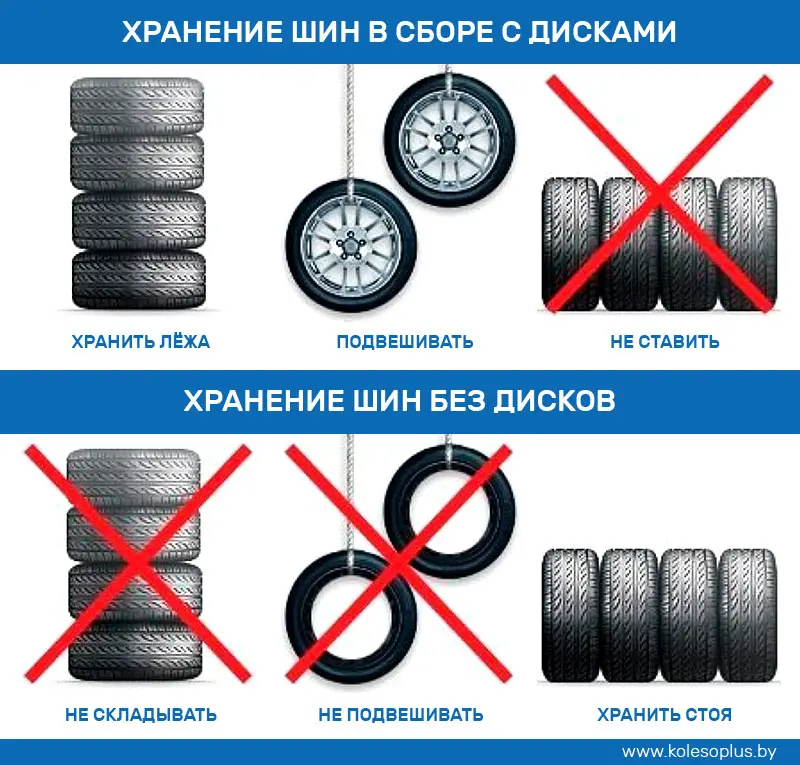
How to store tires without rims?
With the change of season, drivers face difficulties associated not only with the acquisition and installation of a new set of tires, but also with the storage of the old one. Proper handling of an unused set of rubber will help preserve its performance and extend its life. If you do not pay attention to storage recommendations and do it "anyhow", then even the most expensive rubber is unlikely to last long.
When storing tires without rims, car owners make the same mistakes. If you stack tires on top of each other or in a small opening where they can hardly fit, this will lead to deformation of the tires. They can also be deformed if you store heavy things on them. Storing rubber in direct sunlight or near a battery will cause it to dry out. If you leave the tires for a long time to lie in a room with high humidity, then traces of rust will begin to appear. And placement near chemicals, solvents and petroleum products will lead to loss of tire properties.
All these consequences of incorrect storage, respectively, lead to a number of additional problems:
There are difficulties with installing the tire back on the disk;
Difficult to inflate due to loss of tightness of shrinkage;
Can't be balanced
Reduced service life of correct operation.
A storage room, a heated garage, a glazed balcony, a dry cellar, a specialized tire center are places that are suitable for such purposes. It is best if it is a ventilated room where constant humidity and temperature (from +10 to +25 degrees) are maintained.

Invalid options:
Common vestibule near the apartment, cold zone on the floor, stairwell.
In an unheated garage or in a heated one, but in close proximity to the radiator, under leaking pipes, on shelves with sharp protrusions, etc.
Open unglazed balcony. Storage on it is similar to storage outside. Tires will be affected by moisture, wind, direct sunlight and low temperatures. All these factors can render tires unusable in just one season of storage.
The only difficulties in storing tires are maintaining the necessary storage conditions and the rather large area that the tires will occupy. If you service your car constantly in the same service center, then you have the opportunity to leave your tires to store with them. Often large technical centers provide this service for free.
The differences between seasonal rubber from each other are manifested not only in operational data, but also in the composition that is used to manufacture the product. Summer shoes can withstand high temperatures, but despite this, you need to remember that it should be stored in a dry and dark place, at a temperature not lower than zero. And of course, remove diesel fuel and other chemical products to another room.
Tires should be thoroughly cleaned of dust, dirt, stones and other stuck objects before they are packed for storage. Otherwise, abrasive particles can cause irreparable damage to the tread. After cleaning and rinsing, the tires should be dried thoroughly, otherwise, after a while, drops of liquid can provoke the appearance of mold on the surface.
If you plan to store only rubber, without a disc, its surface should be lubricated with a protective agent. Mark the tire so that you can easily install it in place later. Make a mark with which you will understand where the wheel was.
In tire storage, the most important thing to worry about is their position. Also, it is better to hide rubber from ultraviolet radiation, as it has a destructive effect on it.

Tires without a metal support are best placed vertically and rotated 2-3 degrees every 20-30 weeks so that there are no deformations in the most loaded areas. It is this position of the tires that will help to avoid losing their shape and spending on buying new ones. It is best to leave the tires on a semi-circular surface for the entire "rest" period (this way you do not have to turn them over regularly).
It is best to pack tires not in plastic bags, but in bags made of natural materials or special textile cases. This will provide the tires with much-needed airing.
Many leave to store rubber in ordinary garbage bags. Whether this should be done in general depends on the conditions under which the tires will be kept. Of course, if you plan to leave the tires, for example, on an unglazed balcony (under the sun), then bags can help. However, you should not "tightly" seal them in order to avoid the formation of moisture. And special bags that are designed specifically for tires are much more expensive than ordinary polyethylene.
It is forbidden to hang tires without discs, as this can lead to deformations in the attachment points, so forget about all sorts of hooks, loops, ropes and corners. Indeed, during such storage, the geometry of the tires will change and later, when installed on the wheel, depressurization may occur in those places and the tire will constantly let air through. Also, do not stack the tires: the bottom ones can be deformed and you most likely will not be able to install them on the wheels again.
Arranging tires for seasonal storage is not difficult and does not take much time. The main thing is to take care of this in advance and choose the best place. If it’s easier for you to “give and forget”, then it’s better to contact a specialized place. Remember, with proper and timely care, tires will last much longer.
